
SBG Systems announces the release of the first MEMS-based Gyroscope
A MEMS-based gyroscope for demanding underwater and geospatial applications.
LiDAR is an acronym for “LIght Detection And Ranging”. It is a method of remote sensing in the form of a laser sensor that measures the time of flight (TOF) of the light beams. This technology calculates distances and light intensities in a very precise way to map a 3D environment.
Lidar is a sensor that quickly sends pulses of light, in the form of laser rays, without risk to the human eye (Class 1 Eye Safe), reflected on surrounding objects (tree, pedestrian, car, buildings, etc.) or directly to the ground. The exact distance is calculated by measuring the time it takes the light to move to each object and back to the sensor. Since the speed of light is a constant (about 299 792 458 m/s), the Lidar provides a precise distance between the sensor and an object in real time.
A high-density Lidar sends hundreds of thousands of pulses per second. All these measurements are then collected and processed to create a 3D model of the environment, called a point cloud.
This technology captures millions of data to form a point cloud to represent the studied 3D environment with additional data such as position and shape. Lidars cover ranges from a few meters to a kilometer depending on the model.
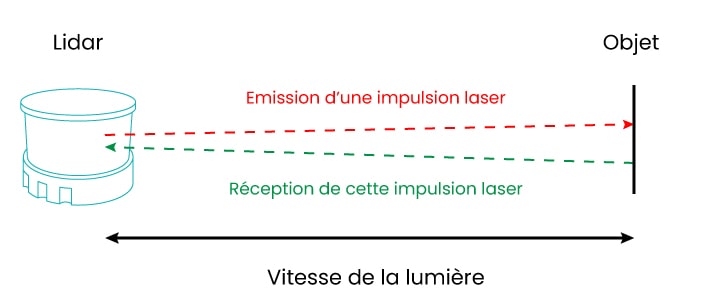
Wind Lidar technology is designed to understand static wind movements over the long term (usually a minimum of one year) for various applications:
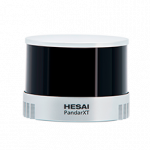
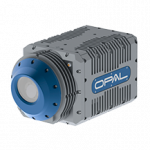
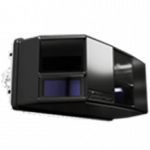
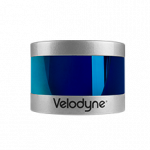
Although the two technologies are similar, RAdio Detection And Ranging uses radio waves to measure the flight time of the reflected signal, using a mobile or fixed antenna. The Lidar principle is different since it uses this same process but by measuring the path made by the laser beams emitted, guaranteeing a better accuracy.
Unlike the ultrasound system, which is too short in range, and the camera, which can only see during the day and in clear weather, the Lidar detects an obstacle several tens of meters away (blind spots, fog, plastic bag, special brightness at sunset, etc.), at night and in rainy weather.
The Lidar 1D sends a single laser pulse on an axis.
The 2D Lidar includes only one laser beam, for detection on a single plane. This laser sensor is mainly used for safety applications (for example for motion detection on a beam from an indoor autonomous vehicle). As part of an autonomous indoor vehicle used in various fields (logistics, distribution, health, etc.), a short-range Lidar 2D laser sensor provides additional precision for human safety (interaction between robots and humans).
The Lidar 3D includes several laser beams (from 16 to 128 according to the models), for simultaneous measurement on several planes.

The laser frequency used, the power of the laser diodes, the range, the measurement rate, the number of echoes are all parameters influencing the accuracy of a Lidar, variable from a few millimetres to a few centimetres. Our Lidar 3D laser sensor ranges (Hesai, Neptec by Lumibird, LeddarTech) provide centimetric precision measurements.
The use case of the lidar will determine the wavelength of the laser. In the context of 3D mapping or obstacle detection, our Lidars operate at wavelengths between 900 and 1550 nm.
A mechanical scanning Lidar is designed to collect 360° data and is often used in research and development services for multiple applications (autonomous navigation, road mapping, bathymetry, etc.).
A Lidar solid-state has no moving mechanical parts and therefore has a lower aperture (FOV or “Field Of View”) than the mechanical lidar. This lack of mechanical parts lengthens the life of the Lidar, and facilitates the production of these sensors, reducing the time and costs of manufacturing. Both types of Lidar laser provide reliable detection in all types of light and weather conditions, including fog, whether static or dynamic.
Simultaneous Localization and Mapping (SLAM) is a method of simultaneous localization and mapping based on data measured by Lidar. Using SLAM algorithms, a moving vehicle equipped with GNSS systems and a Lidar can map an unknown environment and obtain geo-referenced point clouds. The SLAM also offers more or less complex features of perception in the 3D point cloud, for the analysis of trajectories, the measurement of speed, the detection of moving objects or not surrounding the vehicle.
Following each laser pulse, a Lidar can pick up several echoes in return, depending on the type of environment in which it is located (bicycle, tree, building, floor, paint, etc.). Each laser pulse received back by the laser sensor reflected back on different surfaces at different distances.
The strongest echo is the first that the Lidar will capture; it can be a pedestrian, a bicycle or a car. As for the weakest echo, it is the farthest; a tree, a building, a construction or a ground.
If we take the example of an environment with vegetation; the Lidar installed on the roof of a vehicle will first scan the leaves of the trees on the sidewalks of a road in downtown, it is the first echo.
The points of its laser beams will not stop there since they will also reach the buildings behind these same trees, this is the second echo. Most Lidar receive several echoes (2 on average, Lidar Neptec by Lumibird receives 7).
In addition to differentiating several objects, Lidar sensor technology makes it possible to interpret the colours of reflective surfaces. For example, on a road with road markings where there are many elements such as signs, billboards, graffiti, etc.
Image 1: Scenario. Image 2: Data with a Lidar Hesai PandarXT.
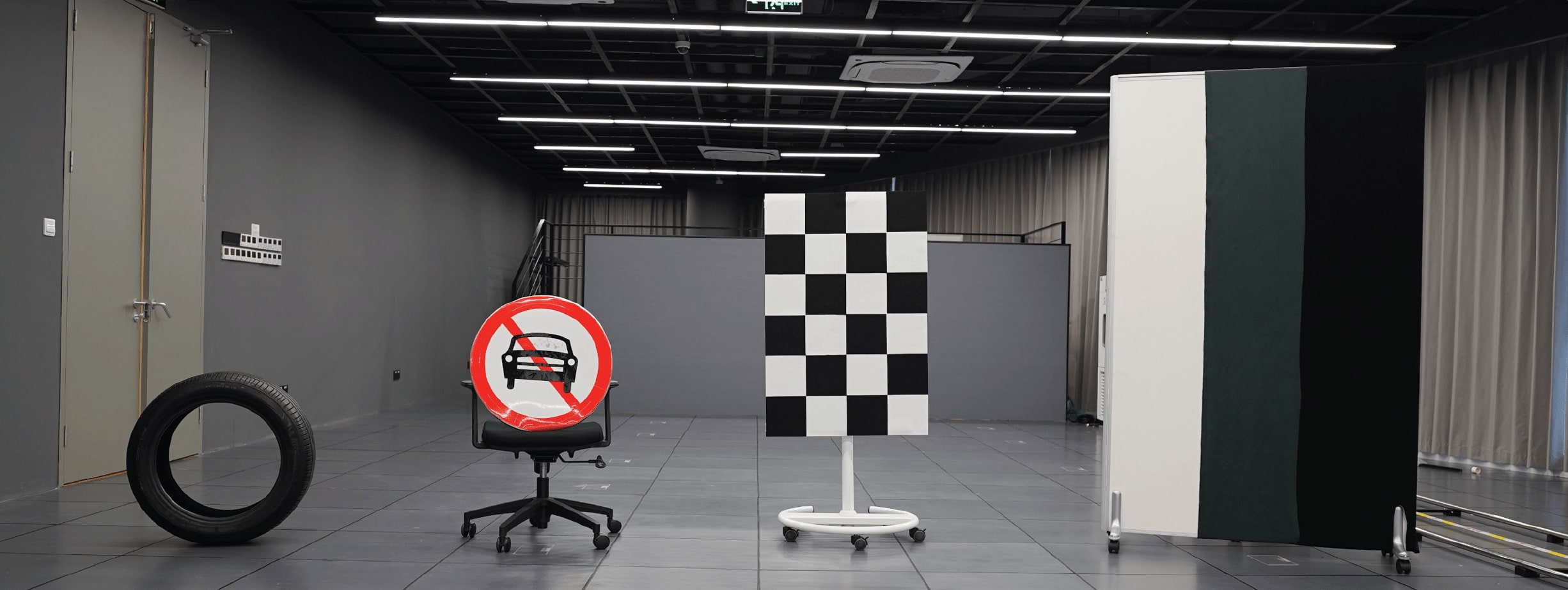
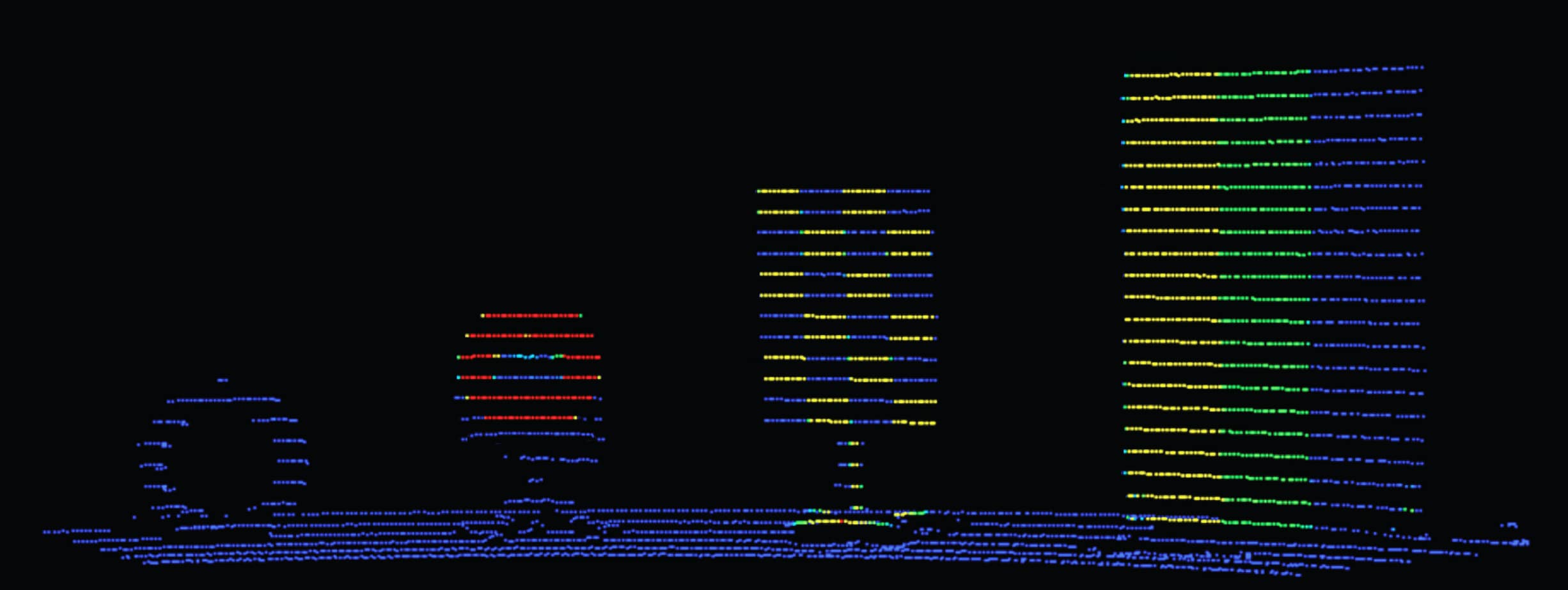
Regardless of the type of application, a Lidar laser sensor is rarely used alone. As a general rule, installation on an embedded system includes a Lidar 3D, combined with a GNSS system and an inertial control unit and/or SLAM perception software.
Whether it is mechanical scanning technology or solid-state, the Lidar laser sensor sends a laser pulse to an object or to the ground nearby. It will then calculate a measurement between the pulse and the return pulse and thus obtain the distance of the Lidar to the object or ground in question.
The addition of an GNSS receiver and an inertial control unit in a Lidar measurement system on vehicle, flying drone or marine drone, guarantees the calculation of the precise position (X, Y, Z) of the detected target. The movements of the carrier are compensated by measuring the orientation of the inertial power plant.
The Lidar is used in numerous and varied applications: robotics for detection and recognition of obstacles, aid in autonomous vehicle navigation, bank mapping, monitoring of sensitive areas and intrusion detection, collision alert, navigation without visibility, etc.
Car, bus, shuttle, agricultural robot, robots-taxis, etc. Autonomous means of transport are beginning to make their appearance among manufacturers and the Lidar presents itself as the ideal solution to detect obstacles, calculate their distance and help define an avoidance path.
In 2021, the american company Nuro announced that it had teamed up with giant Domino’s to develop an autonomous vehicle, equipped with a Lidar Hesai Pandar40 on its roof, scheduled to make deliveries of its pizzas.
In 2018, the French company Navya was experimenting for a month an autonomous shuttle in the city of Nantes. This was a first for the city, which was temporarily acquiring a self-driving, clean-energy vehicle (although in this test, an agent was present in all vehicles) where a Lidar laser sensor was installed on the front of its roof.
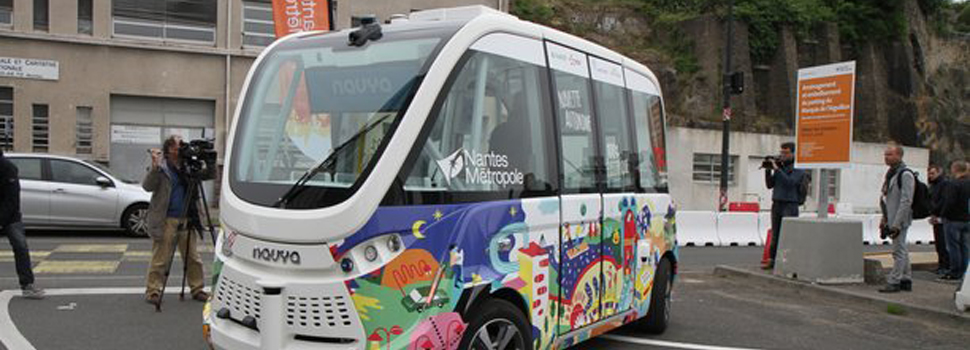
Mobile mapping is a process that includes a vehicle or backpack, equipped with a GNSS system and a Lidar to collect 360° data.
The automation of logistic tasks by autonomous vehicles (AGV: Autonomous Guided Vehicle, AMR: Autonomous Mobiles Robots, pallet trucks) is associated with Lidars, for navigation in warehouses, the detection of shelves, the installation or deposit of parcels and pallets, etc.
Monitoring sensitive sites (warehouses, plants, water reserves, etc.) is a key issue for many companies and administrations. Associated with a dedicated application, the Lidar laser sensor is installed in strategic locations to guarantee the safety of the premises as employees, we speak about volumetric detection.
Installed at the entry points of a place (airport, station, park, etc.), the interest of the Lidar is the counting of the number of people who enter and leave the same area. With a volumetric detection application used in addition to the Lidar, the body defines the areas to be monitored using laser sensors associated with intelligent software (SLAM).
The Smart City is a new concept of urban development with the aim of improving the quality of life of city dwellers and promoting the working environment of businesses. Data capture by Lidar for the precise knowledge of buildings and networks, autonomous navigation for the improvement of traffic conditions are part of these improvement axes.
Directly integrated on a bathymetry drone, the Lidar carries out complete topographies around surface drones during bathymetric surveys. The interest of the Lidar integrated on an aquatic drone is to realize a complete imagery of an environment, by synchronizing the data above and below the water, autonomously and in real time.
It is then possible to map the shoreline above the water in a harbour, bridge or coastal habitats. While the depth sounder is doing its bathymetric survey, the Lidar captures its scatter to create the 3D image of what it perceives in the air.
Aboard an aerial drone, the Lidar sensor performs vertical measurements, for mapping vegetation and buildings, monitoring power lines, etc.
Did you like this article ?
Share it with your colleagues or friends
Read next

SBG Systems announces the release of the first MEMS-based Gyroscope
A MEMS-based gyroscope for demanding underwater and geospatial applications.
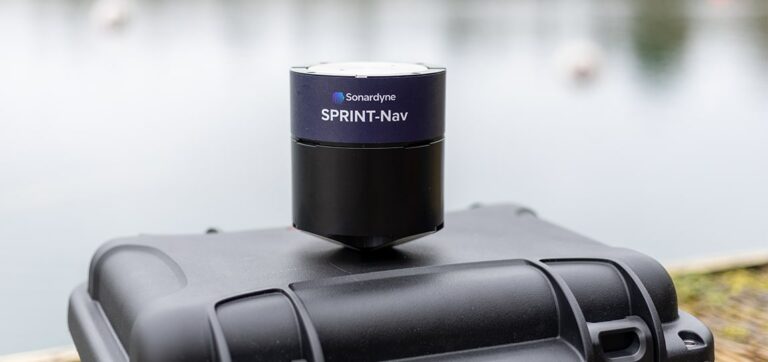
Sonardyne unveils the SPRINT-Nav U: precision and compactness
The new ultra-compact Sprint-Nav U for integration on UAVs, ROVs and USVs
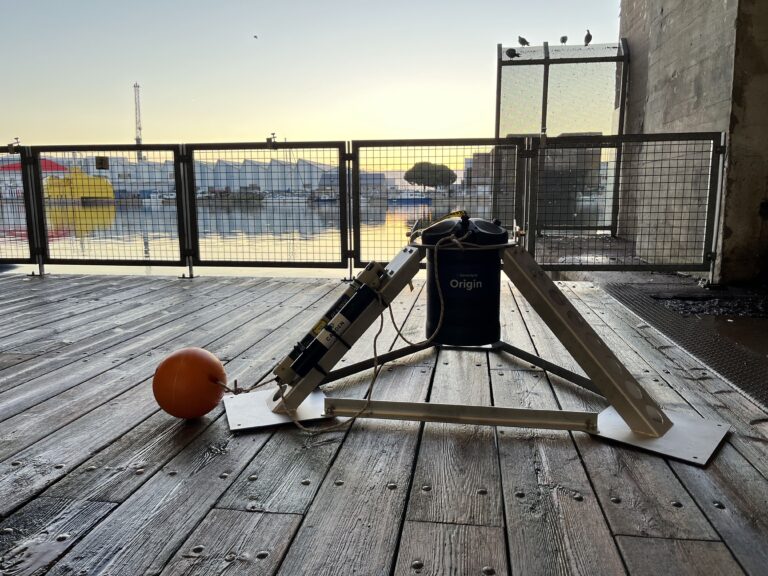
A look back at the CADDEN 2024 Technical Day
An event packed with conferences, workshops and celebrations!

Tous droits réservés – 2024
Vos données sont collectées et traitées pour vous envoyer notre newsletter et améliorer l’expérience utilisateur du site web. Dans ce cadre, le responsable du traitement est CADDEN. Vous disposez d’un droit d’accès, de rectification, et de suppression de vos données, ainsi que d’un droit de limitation, de portabilité ou d’opposition. Pour exercer ces droits, vous pouvez nous contacter via le formulaire de contact. Pour plus d’informations sur la façon dont nous traitons vos données personnelles, vous pouvez consulter notre Politique de confidentialité.